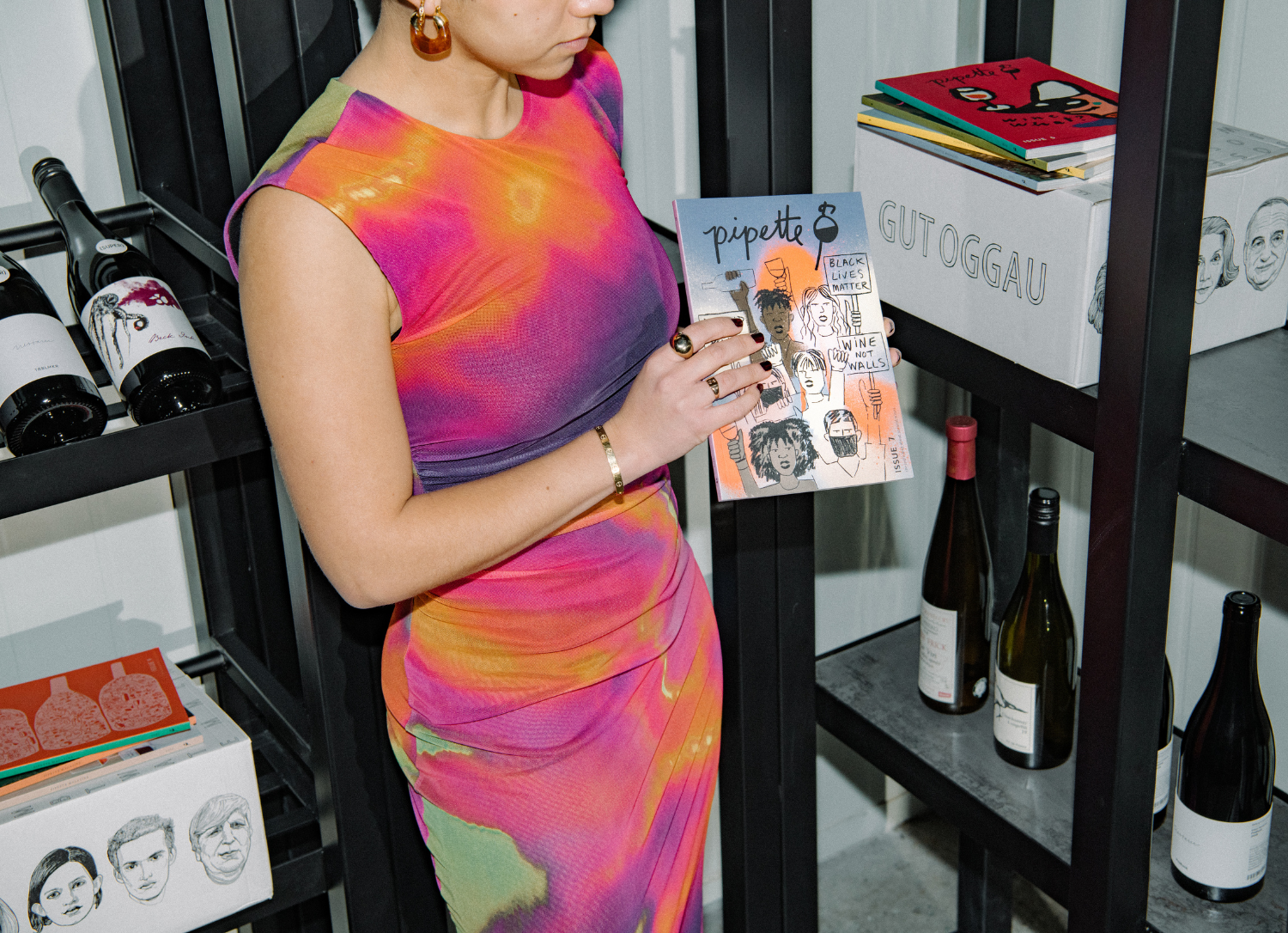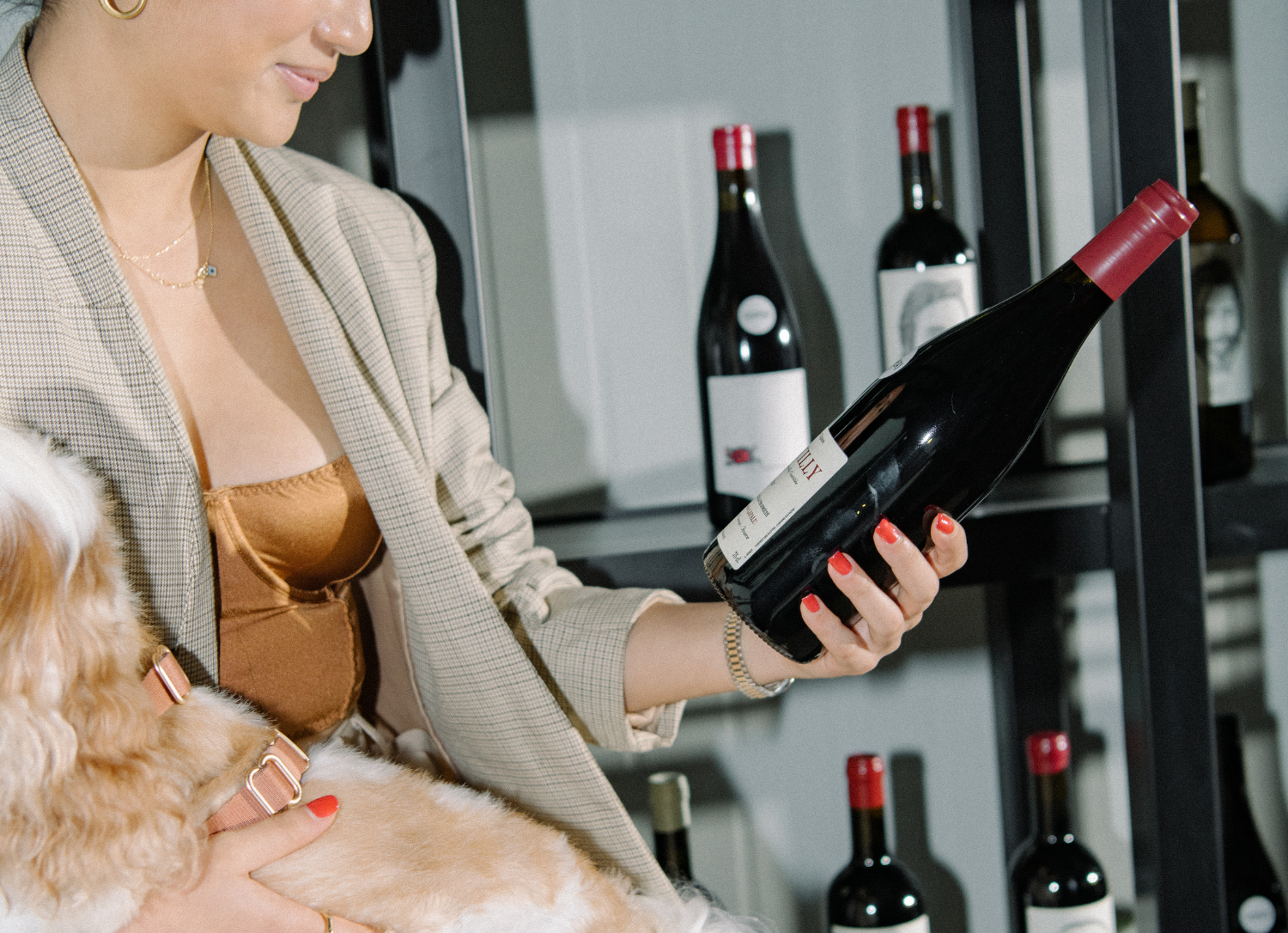As with any new hobby or passion, getting into the world of wine can be difficult—especially because it comes with its own lingo! Hearing wine terms can be intimidating for a budding wine enthusiast, but have no fear: you can easily navigate most conversations and wine menus by just learning 21 wine terms.
This is a list of 21 basic wine terminologies for beginners, broken down to when you’re most likely to use them, whether you want to buy wine in Manila or order a bottle from your favorite restaurant in the Metro:
For ordering, buying, and enjoying wine
Sommelier
A sommelier, also called a somm for short, is the best person to go to when you have any questions regarding wine, whether you’re simply curious about how a wine was made or you want bottle recommendations and pairing ideas according to your taste.
Sommeliers are wine professionals you’ll often meet in settings like wine shops, restaurants, bars, and hotels—and they typically have the certifications to show for their knowledge, given by bodies like the Wine & Spirit Education Trust (WSET) and Court of Master Sommeliers (CMS). At (Super)Natural, for example, our General and Head Manager Chie Gaerlan is actually a WSET-certified wine educator and sommelier!
Grape Variety or Varietal
When someone talks about varietals, they’re referring to the specific kind of grape that was used to make a wine. Usually, this is indicated on a wine label by name, like Cabernet Sauvignon, Chardonnay, Pinot Noir, and so on. Though most of the world’s most popular wines are made by the same few dozen varietals, there are actually thousands of grape varieties used in winemaking today—and believe it or not, they’re all known for having distinctive flavors and textures!
If your wine doesn’t indicate the varietal it’s made from on the label, it’s typically a blend, from a specific appellation, or simply the winemaker’s choice.
Vintage
Vintage refers to the year that the grapes used in a bottle of wine were harvested. You’ll usually find this indicated on the bottle’s label—and if not, that’s usually a sign that the wine is non-vintage (sometimes noted as NV on a bottle), meaning that it was made with a blend of wines harvested from different years. This is a reliable way to make sure that a wine that you love consistently keeps the same flavor every time you buy it year after year, and is particularly common in sparkling wines.
Vintage is important to know because wine is affected by climate and soil conditions as its grapes are grown every year—and these can actually affect the taste of wine! But more practically: it gives you an idea of whether a wine is still drinkable. While fine wine does indeed get better with age, the majority of wines around the world are meant to be enjoyed within 5 years of its vintage!
Blend
In order to achieve a specific flavor they envision, some winemakers create a blend, or a combination of multiple wines. Said wines are typically of different grape varietals that just sing when they come together, and the most famous are easily Champagne (Chardonnay, Pinot Noir, and Pinot Meunier) and Bordeaux (Cabernet Sauvignon and Merlot). But don’t get us wrong: while there are established blends out there, many winemakers—especially ones creating natural wine—are breaking new ground by creating new magic combinations that are must-tries.
Beyond blending varietals, winemakers may also blend together the same wine from different vintages.
Appellation
Wine is grown in regions all over the world, but among them, there are regions that are actually legally defined and protected with winemaking regulations winemakers must follow in order to be considered part of it. These rules range from grape varieties that can be grown or specific steps in winemaking that must be taken, but can be as specific as the size of spaces between rows in vineyards! You’ll find many appellations in Europe, especially in countries like Spain, Italy, and France—and among the most famous are Champagne, Bordeaux, Burgundy, Sancerre, Chianti, and Rioja!
ABV
ABV stands for “alcohol by volume,” and is an indicator of how much percent alcohol there is in a bottle of wine—and practically speaking, it’s good to know if you’re planning to age a wine (higher alcohol content can keep a wine drinkable for a few more years) or you’re simply avoiding getting drunk (or want to). The general average ABV for wine is 12.5%, with anything lower than that considered relatively light and anything higher than that strong. Winemakers are legally required to indicate the ABV of a wine somewhere on its respective label, so you should always be able to find this.
Natural Wine
Though it is actually the oldest style of wine out there, there has been a relatively recent new wave embracing natural wines—that is, wines created with minimal intervention in the winemaking process. This means that little to nothing is added to the wine (like sulfites, lab-grown yeasts, and acid) or the grapes as they’re grown (chemical fertilizers and pesticides), and nothing is taken away from it before it’s bottled. Essentially: it’s wine made without any junk, and it’s an entire concept of wine that’s earned its own set of wine terms.
Natural wine can taste just like conventionally-made wine, but many takes have a distinct funk and can go off the rails in terms of how different it can taste. If you’re interested in trying it yourself, (Super)Natural is one good place to buy natural wine in Manila.
Aeration or Decanting
Wine spends a long time inside a bottle, ranging from months to even years. That said, all that time can close it up—meaning that when you open your bottle and pour yourself a glass, you might not be able to get all the aromas and flavors your wine has to offer right off the bat. This is a problem that can be fixed with a bit of aeration: that is, introducing oxygen to a wine and letting it breathe to unlock its best qualities. You can do this by simply swirling your glass before taking a sniff or sip. If a wine has been aged for a long time, you may want to decant it—that is, pour it into another vessel and let it sit for 15 minutes to an hour before you enjoy it.
For describing how a wine tastes
Acidity
Acidity is the taste of sourness in a wine. All wines will have acidity, as that’s what they are even on a pH scale! But more than just a tart taste in your mouth, acidity contributes to how refreshing, vibrant, and food-friendly a wine is and balances out sweetness, body, and tannins. In tastings, most people would describe acidity in terms of levels: low, medium, and high—or somewhere in between. A good way to know acidity is high: if your mouth really starts to water when you have a sip! Wines like Sauvignon Blanc are known for their high acidity.
Alcohol
We’ve talked about ABV, but alcohol is also something you can actually taste in your wine. When there’s a lot of it (as in bottles with 13% ABV and above), it can feel like a warm sensation in your throat, and when alcohol is lower, it feels “thinner.” That said, alcohol is something that heavily affects the body of your wine: high alcohol means fuller body, lower alcohol tends to mean lighter.
Body
Body refers to how light or heavy a wine feels in your mouth. Many describe full-bodied wines to feel as heavy as whole milk in their mouths—and the tendency is for fuller-bodied wines to have higher alcohol content and tannins. Meanwhile, light-bodied wines are closer to the thin texture and lightness of skim milk or even water in the mouth. Medium-bodied wines are often somewhere in between, described by some to be more like a fruit juice. Body is an extra important factor to note when pairing with food: the fuller the body, the more likely a wine can keep up with heavier proteins like red meat.
Dry, Off-Dry, and Sweet
Sweetness is one of the key characteristics of how a wine tastes, defined by how much residual sugar is left in the wine after fermentation. But funnily enough, wines are most commonly made to taste dry, which means the opposite of sweet. Officially, dry wines are defined as having less than 12 grams of residual sugar (RS) from fermentation per liter—but you can just call it dry if you simply don’t detect any sweetness at all.
If dry and sweet are at opposite ends of the spectrum, then off-dry is somewhere in the middle at 12-32 g/L of residual sugar. If you like your wines sweet and would like to start exploring drier styles, this is a good place to start!
Tannins
In tasting some kinds of wine, you’ll sometimes feel a drying, astringent texture in your mouth and on your teeth after you take a mouthful—these are caused by tannins, a natural compound found in wine grape skins, seeds, and stems. You will only encounter tannins when a wine is fermented with its skins, seeds, and stems, as is common in red wines, orange wines, and some rosés. You may taste high or low levels of tannins, and these may even have different textures, either rougher or smoother, depending on the grape varietal, style, and even the skill of the winemaker.
Balance
You might have heard a wine described to taste “balanced,” but what exactly is it balancing? This refers to how harmoniously a wine’s acidity, body, alcohol, sweetness, and tannins taste on the palate. When a wine has good balance, this means that all of these characteristics work together to create a pleasurable experience, and nothing in particular sticks out too much and drowns out the other.
Fault
Whether a wine tastes good is something that will always be relative, but there is actually a bottomline factor that tells you if a wine is bad or not good to drink: a fault. Wine faults are when something is chemically wrong with your wine. Classic examples are a wine having volatile acidity caused by unhealthy grapes; overoxidation from faulty closure, causing a loss in color and flavor; or contamination by cork taint, which causes the wine to smell moldy, like wet cardboard.
Finish
Sometimes, what a wine tastes like when you first sip is not the same as when you finally gulp it down. The finish refers to the lasting impression a wine leaves on your palate after you’ve swallowed, or the flavor that lingers once it’s gone. Sometimes it can feel smooth or rough; it can taste just like the notes you tasted on the first sip, or it can even taste completely different.
Length
The amount of time that the taste or finish of a wine lingers in your mouth after you’ve swallowed is called its length. Most wines aren’t very lengthy, with the finish only lasting a few seconds—but there are actually some well-made wines out there with longer finishes, some even going for a full minute! When a wine tastes pleasant and has good length, these together are usually a good indicator of high quality.
For understanding how a wine was made
Terroir
From the grape varietal to the winemaker’s own personal choices, there are so many factors that affect how a wine tastes. But many makers today—especially those in the natural wine movement—take a lot of pride in their wine being a pure expression of the grape and the terroir. Terroir refers to the natural environment and conditions in which a wine’s grapes were grown, including soil, climate, biodiversity, and topography.
Hotter climates, for example, tend to produce wines with a fuller body, higher alcohol, and sometimes more fruit notes. A vineyard being located near a coastline can sometimes produce wines where you can catch saline notes, like a sea breeze. You’ll also find that many wines will have notes of flowers, fruits, and vegetables growing nearby: Chianti, grown in Italy, is often described to taste a little like tomatoes and balsamic!
Fermentation
The single most important factor that distinguishes wine from just grape juice is the fact that it undergoes a process called fermentation, a natural process where yeasts break down sugars into alcohol and acid. It’s a process that’s been around for millennia, and is used in every bottle of wine you see—though certain factors and steps in the process will differ slightly depending on the winemaker. Natural winemakers, for example, will only use wild yeasts naturally occurring in the wine grapes and generally avoid introducing a starter to begin fermentation.
Aging
After a wine is fermented, it doesn’t always just go straight into a bottle. Many winemakers age their wines—usually for between six months to two years, but some opt for even longer!—using various processes to cause complex chemical reactions that improve a wine’s flavor, texture, and complexity. These methods include storing the wine in barrels, steel tanks, or amphora with their yeast lees for months, having them undergo malolactic fermentation or clarification, or simply introducing small amounts of oxygen into the liquid. All of these contribute to the taste of the wine by adding complexity, softening harsh tannins and acidity, or even introducing new notes and aromas altogether.
Aging also continues even after the wine has been bottled and purchased, especially in bottles with cork closures that allow a bit of oxygen in.
Oaking
Oaking is one of the final, but optional, steps in the winemaking process where the wine is aged in an oak barrel for several months or even years. Primarily, this helps control how much oxygen is introduced into the wine, but it also introduces new flavors into it as well. There are actually many notes associated with oak aging, and these include cream, spice, smoke, and toast!
Where to buy wine in Metro Manila
The best way to learn more about wine and all the flavors and notes it has to offer is to simply drink more of it made from different varietals, in different styles, and by different winemakers. You’re already in the right place to get started. Shop natural wine in Manila at (Super)Natural, where you can buy natural wines from renowned makers from around the world—including major wine-producing countries like France, Spain, and Italy to even uncommon regions in Austria, Japan, and the Czech Republic.



